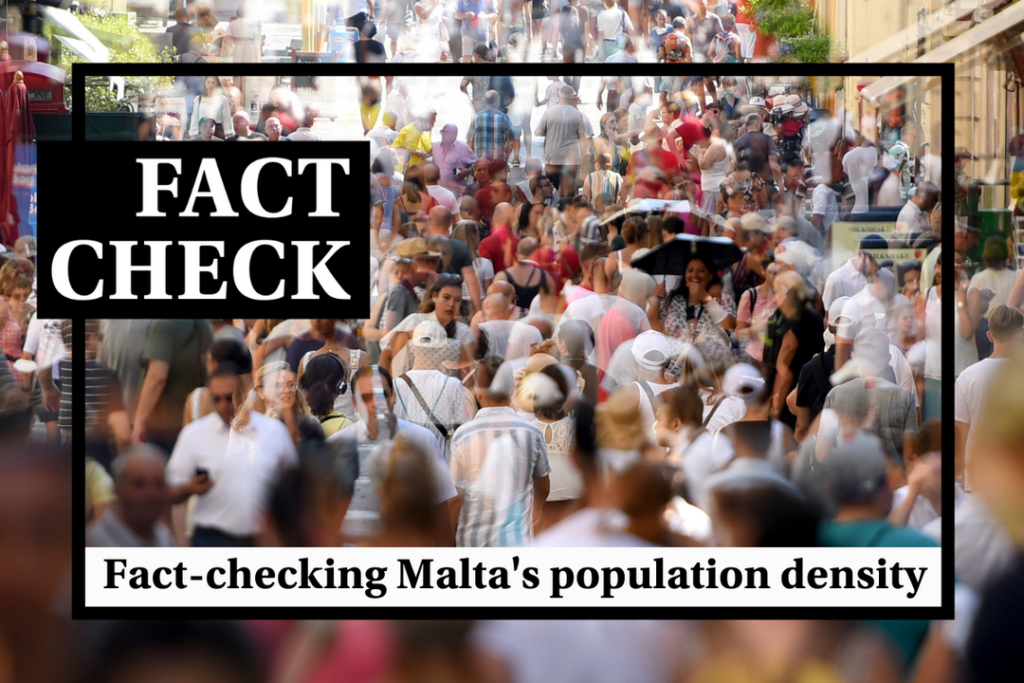Malta has long been the most densely populated country in Europe, with the most recent census finding that Malta’s population density is a staggering 15 times higher than the EU average of 109 and three times higher than second-placed the Netherlands.
This issue has become even more pressing over the summer, with many arguing that essential services such as energy provision and transportation are straining under the weight of Malta’s ballooning population.
Is Malta really as densely populated as we’ve always believed?
On the face of it, yes, and it’s only getting worse.
Malta’s population has increased further since the census was collected in 2021, with the most recent population estimates finding that Malta was home to 542,051 residents by the end of 2022.
This would mean that Malta’s population density is now up to 1,720 people per square kilometre.
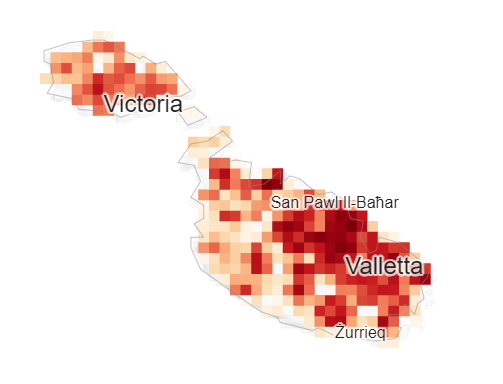
However, comparing Malta’s population density to that of entire other countries, often with large swathes of uninhabited or uninhabitable land, may not be a particularly useful way to gauge Malta’s urban density in relation to our neighbouring countries.
While many European countries record low population density figures, the figures for their urban centres are often completely different.
For instance, Italy’s population density of just 200 people per square kilometre is 10 times less that of Rome, which stands at over 2,200 and a far cry from that of cities such as Naples and Milan, both of which have record figures of over 7,500.
Lived density
Alasdair Rae, formerly a professor of urban studies and planning at the University of Sheffield and now the founder of a company focused on spatial data analysis agrees, arguing that it would be more useful to look at what he calls a country’s “lived density”.
Speaking to Times of Malta, Rae said that “if we want to use numbers that help us understand the density people actually live at and experience in day-to-day lives, then all the empty space is not very relevant”.
“If Malta suddenly annexed Antarctica and then the population density figure for Malta was something like 0.001 km2, that would be technically correct but hugely misleading,” he added.
Describing Spain as a “classic example” of a country that is both “very dense, but also very empty”, Rae explains that lived density removes the empty space, focusing instead on density within urban areas, where most people live and spend their daily lives.
An analysis carried out by Rae, based on 2011 census figures, found that Malta’s lived density of 1,382 per square kilometre was the third-highest in Europe, trailing fellow microstates Monaco and Andorra.
If we update this to reflect the most recent population figures, this would suggest that Malta’s lived density has increased to just under 1,800 people per square kilometre, leapfrogging Andorra into second place but still some way behind Monaco’s figure of over 18,000.
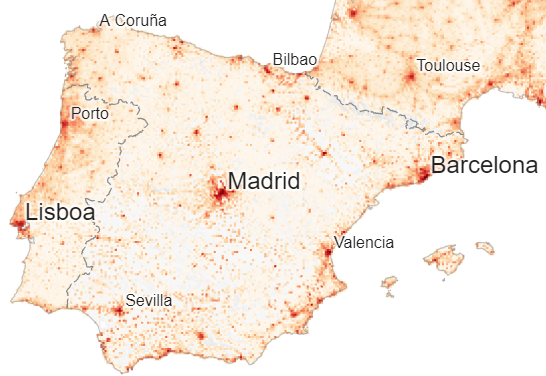
How does Malta compare to similar-sized cities?
The high rate of lived density across several microstates suggests that a better way to view Malta’s urban density would be to treat it as a city-state, analysing its population density in relation to other similar-sized cities and urban areas around Europe.
Malta’s land size of just 316km2 makes it smaller than many other major European cities, with some notable exceptions.
For instance, Scotland’s capital of Edinburgh has a total land area of just 264km2, while Birmingham is a similarly compact 268km2. Other cities, such as Riga, Vienna, and Munich are also similar in size to Malta.
The density in each of these cities ranges between just over 1,700 people per square kilometre in neighbouring Catania to over 7,500 in Bucharest and Milan, with the average density across all cities analysed being just over 3,750.Malta’s density of 1,720 lies towards the lower end of this range, suggesting that Malta’s urban density is similar to that of most cities of roughly the same size.
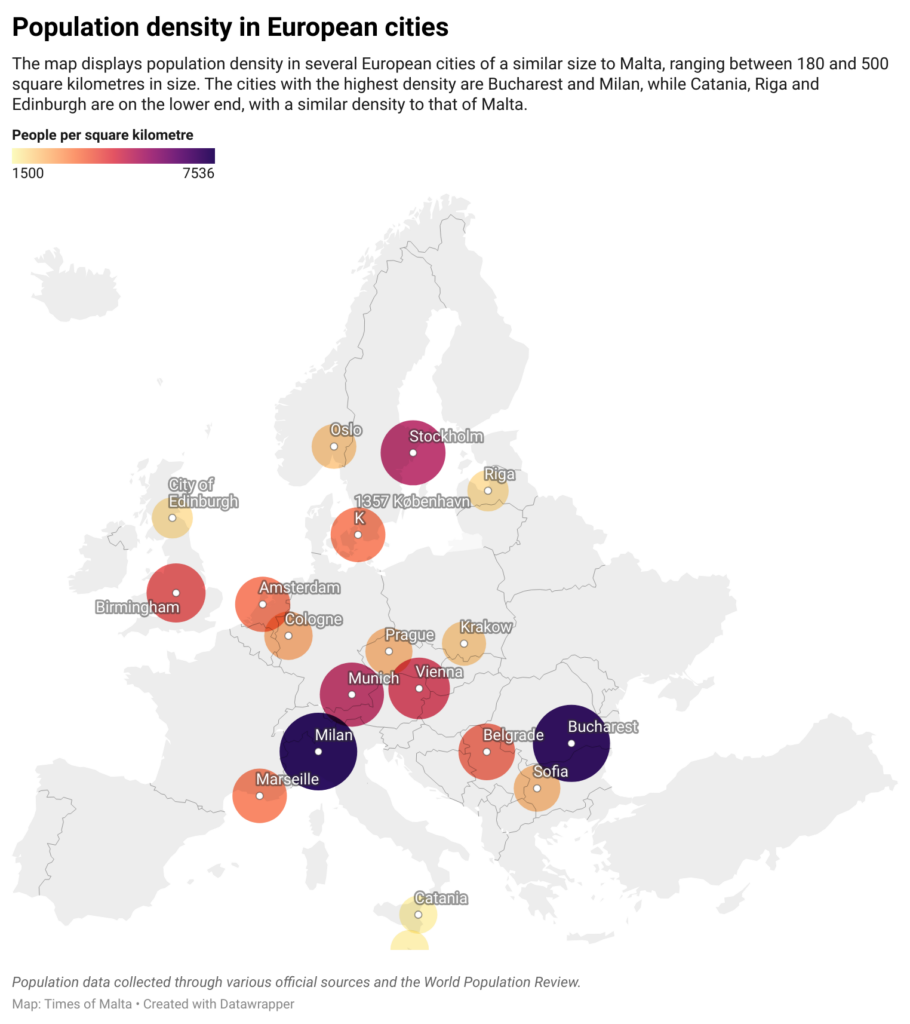
What about Malta’s densest areas?
The 2021 census found that Sliema is now Malta’s most densely populated town, with almost 20,000 people per square kilometre, only slightly fewer than Paris, the most densely populated city in Europe.
Eurostat data estimates a slightly lower figure, suggesting that the densest 1km2 stretch of land in Malta is home to 13,725 inhabitants. This would put it alongside the densest areas of Riga, Krakow and Cologne and a little below the 18,000 in nearby Catania’s busiest areas.
Several other cities have significantly denser urban centres, frequently exceeding 25,000 people in their busiest 1km2 stretch.
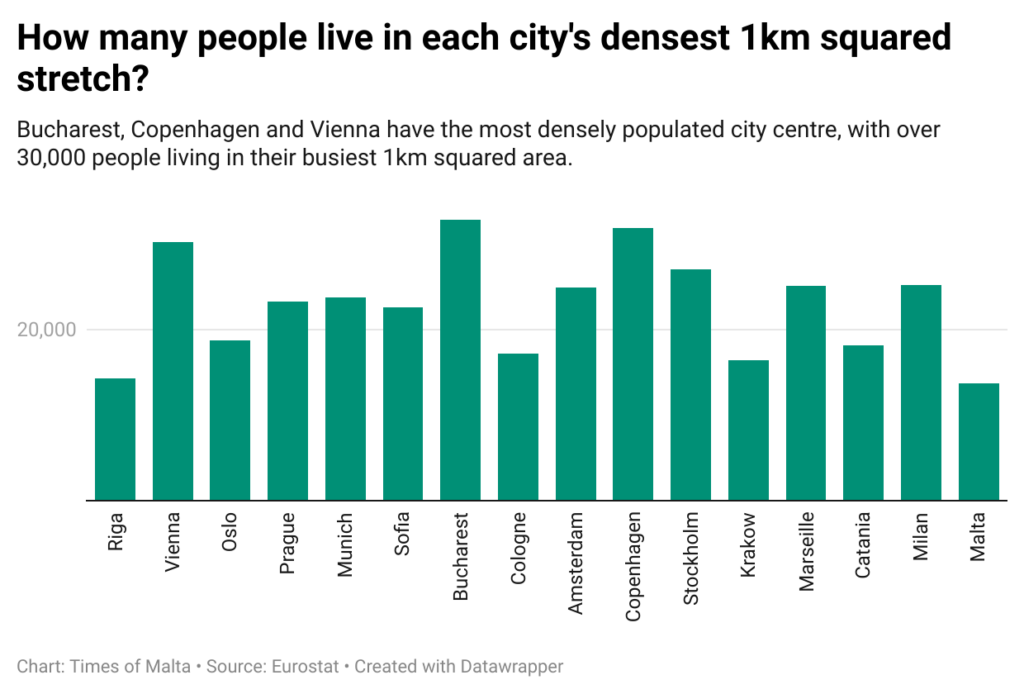
Urban sprawl
Data taken from the European Commission’s Global Human Settlement Layer, a database for measuring urbanisation, gives us a glimpse into urban sprawl across several cities by calculating how many people live within a specific distance of the city’s centre.
This data shows that roughly 480,000 people live within a 10km radius of central Malta, incorporating Malta’s densest towns in the harbour areas as well as other busy towns such as Birkirkara, Mosta and Paola.
This is a similar rate to Catania and Edinburgh and a little lower than Krakow, Oslo and Marseille, both of which are home to roughly 800,000 people within a 10km radius of their centres.
All other cities in this analysis, on the other hand, register over 1m inhabitants within this same area, with Bucharest and Milan both approaching 2m residents.
Verdict
Experts believe that lived density may be a more useful metric to measure a country’s urbanisation than traditional measures of population density.
Malta’s lived density is nonetheless amongst the highest in Europe, in line with that of other similar microstates such as Monaco and Andorra.
When compared to several similar-sized cities around Europe, Malta tends to have a lower population density and fewer people living within 10km of its centre.
The Times of Malta fact-checking service forms part of the Mediterranean Digital Media Observatory (MedDMO) and the European Digital Media Observatory (EDMO), an independent observatory with hubs across all 27 EU member states that is funded by the EU’s Digital Europe programme. Fact-checks are based on our code of principles.
Let us know what you would like us to fact-check, understand our ratings system or see our answers to Frequently Asked Questions about the service.

